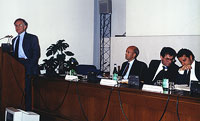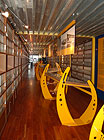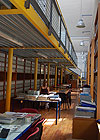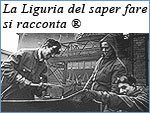 An interview with Tommaso Fanfani Chairman of the Piaggio Foundation An interview with Tommaso Fanfani Chairman of the Piaggio Foundation
by Giuseppe Paletta
|
| Enlarge text |
 |
 |
|
The Initial Motivations
Between Public and Private
The governance
The Relationship between Foundation and Business
Bibliography
Piaggio Foundation arising from the cooperation within the company, whose participation reached 50% and two local bodies: the municipality of Pontedera and the province of Pisa, who each contributed 25%. The board of directors is formed by 8 directors, 4 publicly nominated and 4 privately. The endowment fund is supported at 50% by Piaggio and at 50% by the two local bodies. This is the fundamental point that best expresses our shared sense of this cultural initiative: we want the Foundation to be not only an element of prestige and image for the company, but also an element and a pivotal link between business and territory, between culture and business. The photograph you see here was taken during the first public initiative of the Foundation. 
On May 30, 1995 in Florence at the offices of the Region of Tuscany, the Foundation presented “il filo di Arianna”, an orientation program towards university and the world of work for high school students: I received it from the Agnelli Foundation in Turin. The presentation was well-attended; besides Giovanni Alberto Agnelli, guests included Riccardo Varaldo, director of the S. Anna School in Pisa, Mario Garzella, Piaggio CEO, Alessandro Pinelli, director of external relations and myself. Thus we began to operate with an orientation to the training for work and study, to the guidance for students in their choice of university. From that moment, the Foundation gave life to a series of initiatives and activities, especially in the field of culture, from economy to justice, hosting –once the Museum became available –plays, art exhibitions and other events. The core of the Foundation aims at the mobilization of the culture in the territory not only of Pontedera, but also of the Tuscan region. One unplanned result may well have been the territory’s sharing in the promotion of Piaggio’s products. This is the sense of the origins of Piaggio’s cultural project. We should remember that Giovanni Alberto Agnelli started the project, but when he died in 1997, the museum had not yet been built. The Foundation had been working for only two years and only the archives was consolidated. We were at the beginning of the project and in 1997 there was a moment of indecision on what might be the future of Piaggio’s cultural project.
 At that time, the chairman was Alessandro Barberis who agreed fully with the project of Giovanni Alberto Agnelli and felt it was a moral duty towards the young entrepreneur who believed in the integration between the objectives of corporate responsibility and of corporate productive development. The museum was inaugurated on March 29, 2000. It was the culmination of a process that had begun seven years earlier. On that day, the collection of Piaggio vehicles was shown both a national and international public. The museum was a lot smaller than what is today: the number of vehicles was less, the setting was far more Spartan, The choreography and communication had not yet been implemented. But the museum had begun to exist, so the cultural projects continued according to their three basic elements: archives, museum and foundation. In 2000, the business went through a critical stage, both at the end of the 1990s and at the beginning of the new century. The company went through a period of productive crisis that reached dramatic levels in 2003. The level of debt was so high that we didn’t know how to keep the company and the Foundation working. These are notorious facts and I can only recall them: in October 2003, the control of the company passed to Roberto Colaninno. That moment was filled with tension due to financial difficulties that the new chairman faced by injecting fresh capital into the company and implementing a complex strategy of reorganization. The priority was the future of the company, not to mention thousands of jobs. At that moment the cultural project could have either faded into the background or even come to a complete stop. On the contrary, from the beginning Colaninno expressed his support of the cultural project and addressed the recovery of the foundation’s activity, discussing it with the public partners, in particular the municipality of Pontedera. The new chairman found a consolidated experienced cultural structure, shared it and became one of its supporters and still today expresses his responsibility and participation to the extent that the chairman of the company and the two CEOs sit in the Board of Directors of the Foundation. One may well ask how an Italian financier, who had taken over direction of an engineering company, was able to find the strength at such a critical moment for the business, to keep investing resources in an intangible project with the cultural goals of creating links with its territory.
At that time, the chairman was Alessandro Barberis who agreed fully with the project of Giovanni Alberto Agnelli and felt it was a moral duty towards the young entrepreneur who believed in the integration between the objectives of corporate responsibility and of corporate productive development. The museum was inaugurated on March 29, 2000. It was the culmination of a process that had begun seven years earlier. On that day, the collection of Piaggio vehicles was shown both a national and international public. The museum was a lot smaller than what is today: the number of vehicles was less, the setting was far more Spartan, The choreography and communication had not yet been implemented. But the museum had begun to exist, so the cultural projects continued according to their three basic elements: archives, museum and foundation. In 2000, the business went through a critical stage, both at the end of the 1990s and at the beginning of the new century. The company went through a period of productive crisis that reached dramatic levels in 2003. The level of debt was so high that we didn’t know how to keep the company and the Foundation working. These are notorious facts and I can only recall them: in October 2003, the control of the company passed to Roberto Colaninno. That moment was filled with tension due to financial difficulties that the new chairman faced by injecting fresh capital into the company and implementing a complex strategy of reorganization. The priority was the future of the company, not to mention thousands of jobs. At that moment the cultural project could have either faded into the background or even come to a complete stop. On the contrary, from the beginning Colaninno expressed his support of the cultural project and addressed the recovery of the foundation’s activity, discussing it with the public partners, in particular the municipality of Pontedera. The new chairman found a consolidated experienced cultural structure, shared it and became one of its supporters and still today expresses his responsibility and participation to the extent that the chairman of the company and the two CEOs sit in the Board of Directors of the Foundation. One may well ask how an Italian financier, who had taken over direction of an engineering company, was able to find the strength at such a critical moment for the business, to keep investing resources in an intangible project with the cultural goals of creating links with its territory.
 There are several answers to this question and I believe only Roberto Colaninno can give them without fear of contradiction. From my point of view, in the Piaggio cultural project, the function of social responsibility plays a leading role. The vision of the relationship among shareholders and their expectations takes the connotation of who believes that there are new frontiers for ‘intangible’ activities that are functional to the strategic objectives of the company. This implies that both the entrepreneur and the company are fully convinced that pursuing cultural objectives not only underlines the ethical value of the business itself, but also increases the visibility of the business in the market. Numerous studies have demonstrated consumers’ preferences for products of a business that invests in culture, in solidarity projects and other ‘intangible’ values. Roberto Colaninno worked in Olivetti, in Ivrea where he started his managerial and entrepreneurial career. When we consulted rapidly on the strategies and policies of the foundation, I heard a few reference to experiences coming from far away that I believe can orient an entrepreneur to full support of the corporate social function. In terms of “positioning” of the Foundation, the best proof of the success of the Piaggio cultural project and its usefulness as a link between territory and business came to light during times of disagreement –in labor relations and internal conflicts as well as in the relation between the company and the local authorities. It is no secret that in some of the most critical moments the foundation served as the meeting place for bargaining between trade union and corporate representatives, or between corporate units and government representatives.
There are several answers to this question and I believe only Roberto Colaninno can give them without fear of contradiction. From my point of view, in the Piaggio cultural project, the function of social responsibility plays a leading role. The vision of the relationship among shareholders and their expectations takes the connotation of who believes that there are new frontiers for ‘intangible’ activities that are functional to the strategic objectives of the company. This implies that both the entrepreneur and the company are fully convinced that pursuing cultural objectives not only underlines the ethical value of the business itself, but also increases the visibility of the business in the market. Numerous studies have demonstrated consumers’ preferences for products of a business that invests in culture, in solidarity projects and other ‘intangible’ values. Roberto Colaninno worked in Olivetti, in Ivrea where he started his managerial and entrepreneurial career. When we consulted rapidly on the strategies and policies of the foundation, I heard a few reference to experiences coming from far away that I believe can orient an entrepreneur to full support of the corporate social function. In terms of “positioning” of the Foundation, the best proof of the success of the Piaggio cultural project and its usefulness as a link between territory and business came to light during times of disagreement –in labor relations and internal conflicts as well as in the relation between the company and the local authorities. It is no secret that in some of the most critical moments the foundation served as the meeting place for bargaining between trade union and corporate representatives, or between corporate units and government representatives. On several occasions, the Foundation has acted as a sort of buffer zone in a territory where labor conflicts have always been rather heated and debate is often lively. Unquestionably, this institution has an important cultural function that is strategic for the territory and shared by the local municipal and provincial bodies; but it also serves as an intermediary in other functions that are not strictly cultural. From the public partners’ point of view, the Province of Pisa and the municipality of Pontedera, there has always been the sharing of our projects. We have thought up and planned the activities together each year, sharing strategies and initiatives, and making choices, from the biggest to the smallest details for an event, an exhibition or a conference. I believe that this agreement and sharing demonstrate a rare example of a mixed Foundation on equal terms between private and public that has succeeded in satisfying both the expectations of a private partner – that wants an income from its investments – and the requests of the local bodies that use different parameters to evaluate the return on cultural activity.
On several occasions, the Foundation has acted as a sort of buffer zone in a territory where labor conflicts have always been rather heated and debate is often lively. Unquestionably, this institution has an important cultural function that is strategic for the territory and shared by the local municipal and provincial bodies; but it also serves as an intermediary in other functions that are not strictly cultural. From the public partners’ point of view, the Province of Pisa and the municipality of Pontedera, there has always been the sharing of our projects. We have thought up and planned the activities together each year, sharing strategies and initiatives, and making choices, from the biggest to the smallest details for an event, an exhibition or a conference. I believe that this agreement and sharing demonstrate a rare example of a mixed Foundation on equal terms between private and public that has succeeded in satisfying both the expectations of a private partner – that wants an income from its investments – and the requests of the local bodies that use different parameters to evaluate the return on cultural activity.

